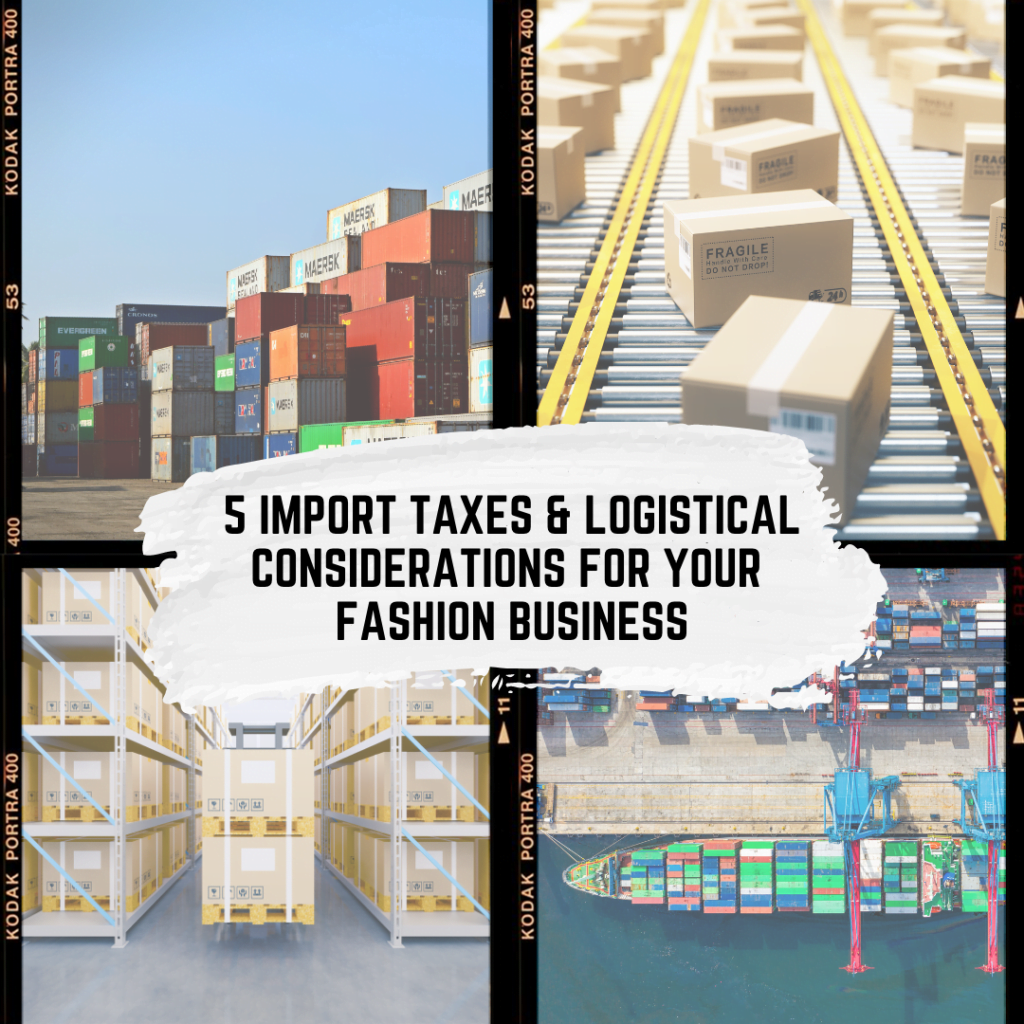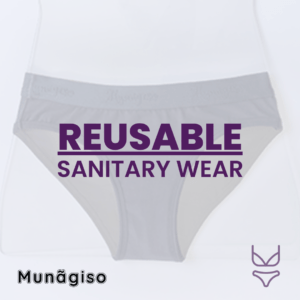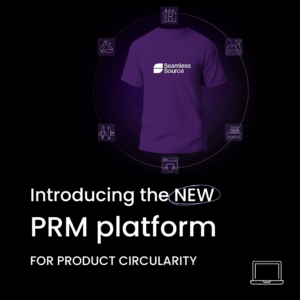Starting a fashion business is the most exciting business venture you can pursue, but unfortunately not all aspects of it are glamorous, and there are certain things you need to learn beforehand, before committing to your business. One of these factors being your import taxes and logistical considerations. Importing to and from the UK can be pretty costly, so it is good to do your research beforehand to find out the best way you can be effective with your money.

1. Cut Costs
Trading internationally is an amazing luxury we are now open to, whether it be as far as East Asian or Europe, it is now much easier to do so. Finding suppliers from all around the world is exciting, but the process of importing product is not so exciting as it can be very expensive! Some key things you need to consider are the price of the goods you’re ordering (in this case clothing products or fabrics), the transportation costs, fees charged by outsourced service providers and additional charges levied by the government agencies for export and/or import for duty and VAT.
Some of these charges cannot be changed, however there are some areas where you can cut costs. For starters, paying for the goods themselves. If you pay your overseas suppliers through regular bank transfers, fees and costs will be added and you also need to consider the exchange rate depending on the country! Depending on your bank, the exchange rate might not be brilliant. Using an alternative platform can save you from having to pay these additional costings:
TransferWise
With TransferWise you can save up to 8 times the amount than generic UK high-street banks. When making an international payment, you will get the actual mid-market exchange rate and you will pay a small upfront fee for each transfer – everything is clear from start to finish and you’re made aware of your financial situation straight away. This platform is regulated by the FCA has 3million + customers- these are pretty reliable figures!
If you are dealing with different currencies, the ‘multi-currency borderless account’ holds up to 40 currencies and will charge you NO fees when retrieving the money. Alternatively, our service at Chanodil allow you to pay in the same currency as the business you are working with abroad, this therefore makes it easier for you to work out and manage your finances.
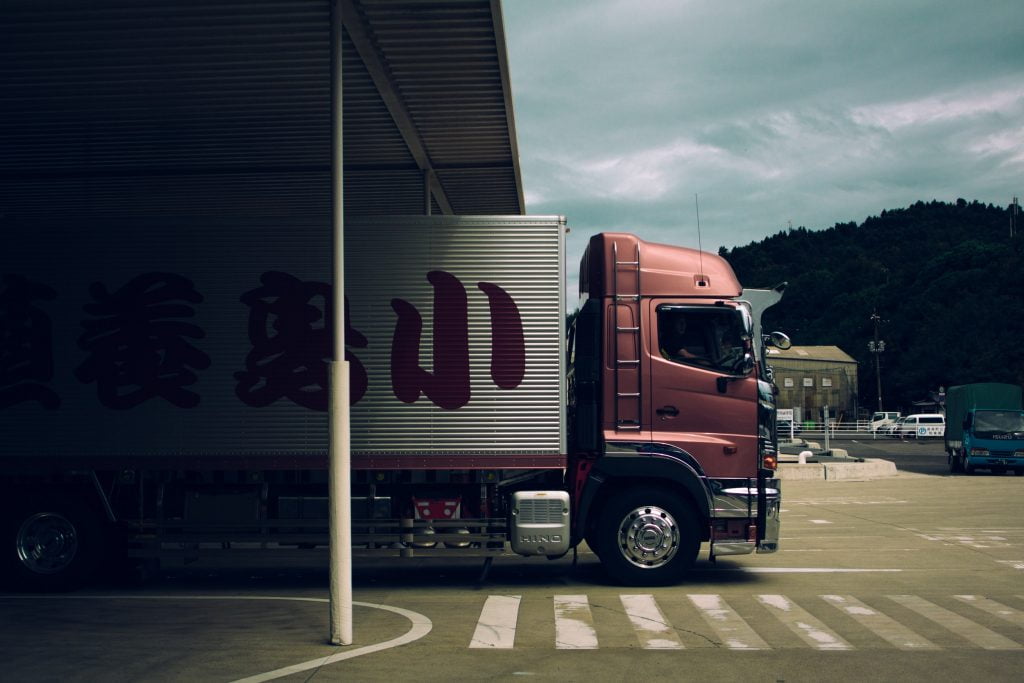
2. Transportation Options
A majority of your costings will go to the transportation fees. However, there are a ton of options that you can choose from. These include;
Air Freight
Air freight is used mainly when transporting small high value items or things that are required urgently. These good can be transported through a passenger aircraft or a specially designed freight plane. There are a variety of options within buying a small amount of freight space on a normal flight to managing an entire specified plan yourself- not to mention the change in costs. The costing is typically high, but it is much quicker to transport your goods via air rather than by road.
The prices are usually based on the weight and worth of the goods. Shipping a small item from a European country such as Italy or Spain to the UK will most-likely cost you less then shipping the same quantity item from an Asian country such as Bangladesh or India.
It is important to know the cost of import duty to and from the UK as well as calculating the cost of goods and transportation fees. The VAT is usually worked out by adding the cost of goods and transportation with the duty paid. By paying more in transportation, you are increasing the costs of high duty and VAT costs further down the line.
Sea Freight
This form of transportation is often used when importing goods from the far East to the UK. It is fairly cheap and a great way to move larger volumes of products around the world.
If you are ordering a large quantity, you will have your own 20-40 feet container, otherwise you may share the space of the container with other shipments. The time consumption for this transportation technique can take up to several weeks, however it is a lot cheaper than using transport by air.
The costings for sea freight is worked out based on the volume rather than the actual weight as well as the value of the item. Again, the cost with differentiate depending on the country it is being shipped from.
This option is better suited for large orders typically 100kg or over. The cost of transportation via sea is a lot cheaper than any other method and the duty and VAT will also reduce.
Rail
Rail transport can be fairly cost-effective for some areas. European rail services are fast and persistent but they do not offer much flexibility on road haulage. On the flip side, the rail option is environmentally friendly but can be quite expensive in comparison to moving goods by road. You will also need cover for the transportation of your goods from the original supplier to the depot and from your depot to your warehouse/ studio. This makes things time-consuming and add to your costings.
Road
You can transport your items via trucks within Europe. By doing so, you can also move large volumes of your clothing due to the capacity of the trucks. You will often see well-established brands such as Pretty Little Thing using this method. The cost is reasonable but you’ll need to be made aware of potential prices for fuels and tolls. This option can also be time-consuming due to road traffic and any unexpected delays. Bigger companies will generally decide to transport large items of clothing packages via Road or Sea freight, depending on their finances.
Additional Notes
If you are unsure about how to calculate your tax for shipping, click here to find out more.
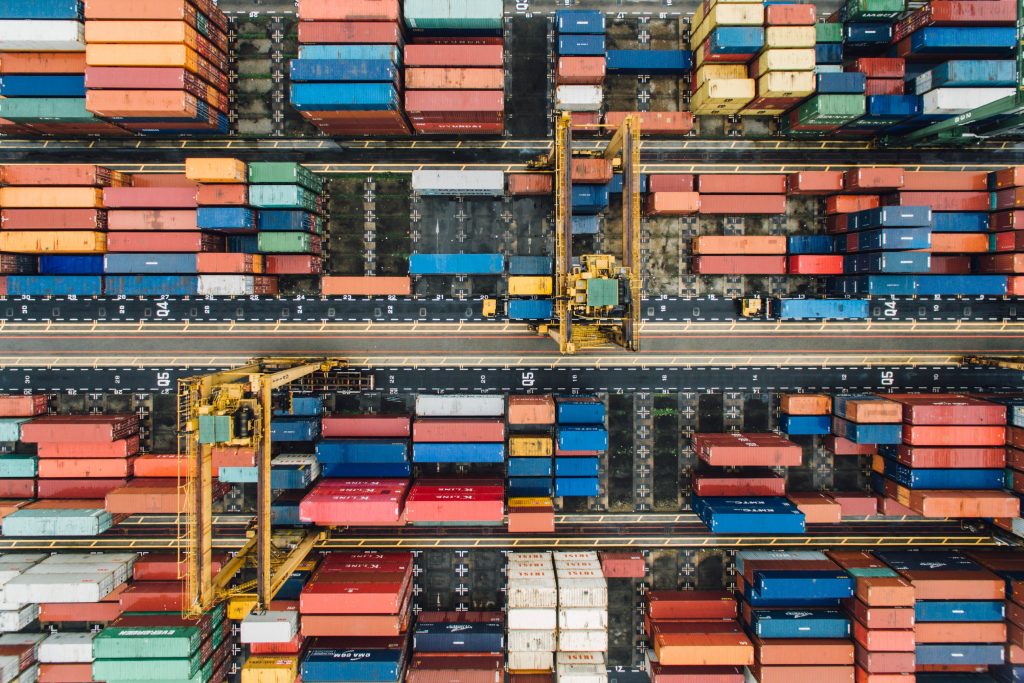
3. Importing from the UK
When you are importing your clothing goods from the UK you’ll need to ensure you undertake some important steps. You may hire a freight forwarder or customs broker to do some of the tasks (if you have one).
Some key tasks include,
– Register for an EORI number – an EORI number is a European Union official registration number for businesses that want to import and/or export from and to the EU. Getting this shouldn’t take you too long and is an easy process
– Get the correct commodity code for your goods (you may need to apply for a BTI ruling which can time some time)
– You may need an import license for your goods
– Sort out logistics for your transport – this can be complete by a specialist. If you’re doing it yourself, it is important to ensure you have a team to receive your goods on the day they arrive, in a timely manner
– Declare your goods to customs – if you have a custom broker or freight forwarder they can do this
– Pay any due duty or VAT – this is important to check as you want to avoid any future financial errors

4. Commodity Code for UK Imports
To import items into the UK you need to ensure it has the correct commodity code. This code provides details of the goods you are importing, i.e; product type, material, how they are used, packaging. This detail is used for tracking imports into the country and ensuring that any hazardous items are taken care off. It also helps calculate the import duty and VAT. You must ensure you use the exact correct code otherwise you may face legal consequences (such as being fined). If you need help with this, you can get specific advice from HMRC.

5. Managing VAT
There is a difference with how VAT is handled on imports coming from the EU compared to imports outside the EU.
Outside the EU
If you are importing from outside the EU, the costs will come from the UK rate on a majority of your clothing goods- this is 20 per cent. If you are importing items but intend to export them again within the space of 2 years, you may be able to receive reduced VAT.
In some other cases, you may be able to claim your VAT back, for more information, check out HMRC. – https://www.gov.uk/reclaim-vat
Inside the EU
This is known as acquisition. Imports must be declared by the business which initially imports them into the EU area, if they were imported from outside the EU and then moved. VAT paid goods from other areas of the EU is known as ‘acquisition tax’ and is added to your normal VAT return. Of course, in due time, this may change depending on the Brexit situation.
Importing to and from the UK can be fairly tedious, time-consuming and stressful. There is a lot to learn if you’re a new beginner to all this, however after a short while, you will ace it. In addition, we hope that this article has given you an idea of the process and things to look out for.
